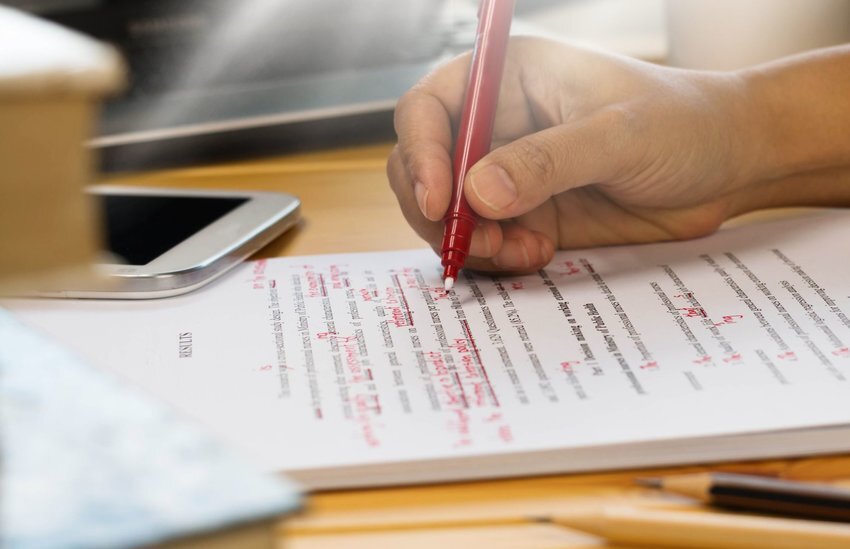Grade-school grammar lessons drill the parts of speech into students’ brains, but once you’re out of the classroom it can be hard to remember all the details. You may be a skilled public speaker but not know the difference between a subordinating conjunction and a reflexive pronoun. Never fear — we’re going to break down the eight parts of speech and how to use them.
Noun
Nouns are one of the first parts of speech children learn to identify. They’re pretty straightforward: They name people, places, and things. They’re also the workhorses of a sentence and play many roles. They can be subject, direct object, indirect object, subject complement, object complement, appositive, or adjective.
Proper nouns designate a specific name or title: "Queen Elizabeth," "Mount Everest," "The Great Gatsby." Proper nouns are always capitalized.
Common nouns are regular, everyday people, places, and things. When talking about things, it can also be an idea, or intangible concept. Common nouns could be "mother," "playground," "apple," and "magic."
You can further identify nouns as concrete or abstract, plural or singular. A concrete noun is one you can identify with your five senses. You can see, hear, touch, taste, or smell it. "Book," "whistle," "pillow," "sandwich," and "roses" are concrete nouns. Abstract nouns are general ideas, such as "pleasure" or "excitement." If you only have one book, it's singular. Check out a stack of books from the library and it's plural.
Pronoun
Pronouns can be a hot topic, but they're actually pretty simple. A pronoun is used in place of a noun, which becomes the pronoun's antecedent. The most commonly used pronouns are personal pronouns: "she," "her," "he," "him," "I," "me," "you," "it," "we," "us," "they," and "them."
Possessive pronouns indicate ownership: "my," "your," "its," "his," "her," "our," "their," and "whose."
If you want to emphasize another noun or pronoun, you would use a reflexive pronoun: "myself," "yourself," "himself," "herself," "itself," "ourselves," "yourselves," and "themselves."
Relative pronouns introduce a subordinate clause: "that," "what," "which," "who," and "whom."
And demonstrative pronouns are identifying or referring to nouns: "that," "this," "these," and "those." They take the place of a noun that has already been mentioned (that antecedent).
Verb
Quite simply, a verb expresses an action, or state of being. To form a complete sentence you must have a subject and a verb. The verb must agree with its subject, so make sure both are either singular or plural. You can also conjugate a verb to form different tenses. The verb “to be” breaks down into "I am," "you are," "he/she/it is," "they are," and "we are" If you want to express “to run,” it can be “I run,” or you can include a helping verb and say “I am running” or “I can run.”
Of course, English is chock-full of irregular verbs, too. "To be" is one of those non-standard verbs. They don't fit a pattern, but if English is your primary language, most of them probably just come naturally to you.
Adjective
An adjective is what adds color and description to your sentence. An adjective describes a noun or pronoun. If you’re answering the questions of which one, what kind, or how many, that’s an adjective. The RED apple...the OLD man...the GLASS building. The short words, or articles, "a," "an," and "the" are usually classified as adjectives.
Adverb
Adverbs are similar to adjectives, but they modify or describe verbs, adjectives, or another adverb. They usually answer questions of when, where, how, why, and to what degree. The boy ran QUICKLY...the teacher shouted LOUDLY...the dog SNEAKILY stole the treats. You can usually tell if a word is an adverb if it ends in "-ly."
Preposition
A preposition is a word placed before a noun or pronoun to form a prepositional phrase that modifies another word in the sentence.
The mouse ran UNDER the bookcase. In this case, “under” is the preposition within the prepositional phrase “under the bookcase,” modifying how the mouse ran.
The most common prepositions are "up," "over," "down," "under," "to," and "from," but that is by no means a complete list. The English language contains hundreds of prepositions.
Conjunction
If you remember your Schoolhouse Rock (Conjunction Junction, what’s your function?) you know that a conjunction joins words, phrases, and clauses. Coordinating conjunctions link equal elements: "and," "but," "or," "nor," "for," "so," "yet." Subordinating conjunctions are for comparing things or linking unequal clauses: "because," "although," "while," "since."
Interjection
Interjections add spice and excitement to your language. They are used to express emotion and often with exclamation points. "Oh my!" "Wow!" "Yay!"

